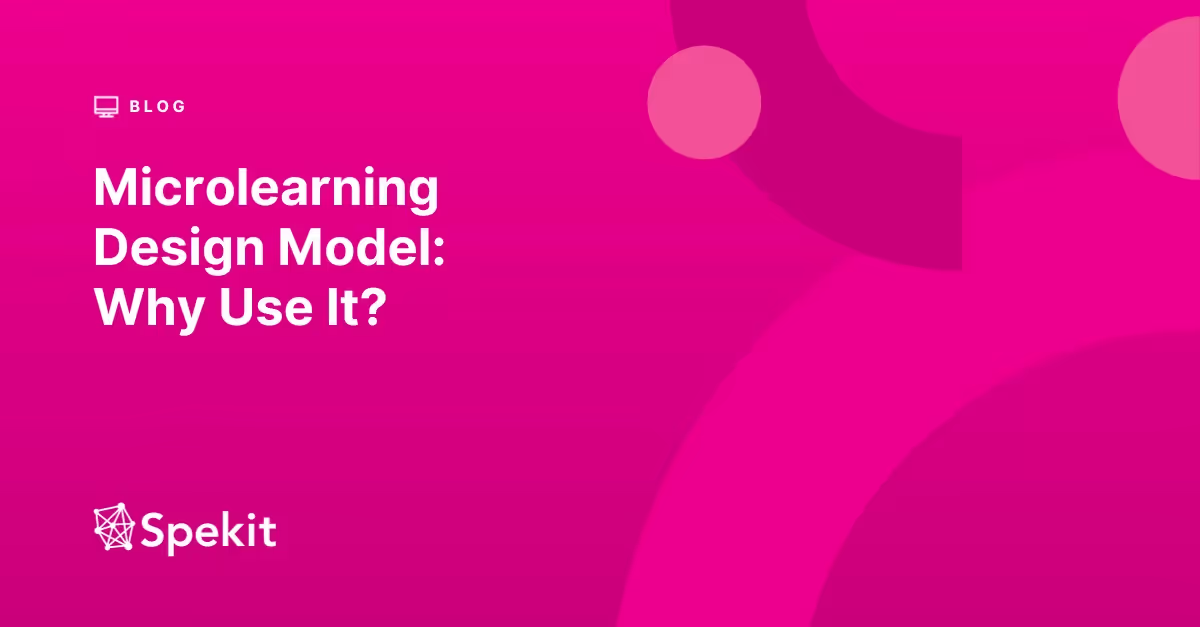“Meet the modern learner: untethered, demanding, collaborative, empowered. And impatient!” – Josh Bersin
Bersin tweeted this quote in 2014, but it’s even truer today. In fact, today Bersin and other industry leaders envision corporate training programs implemented within a learner’s native environment—their work apps, digital social forums, and, of course, on their phone through mobile learning.
The microlearning design model hits the spot for modern learners. And, since millennial workplace turnover costs the US economy $30.5 billion annually , it hits the spot for companies looking to retain talent, too. LinkedIn’s 2019 Workplace Learning Report discovered what the talent wants. Overwhelmingly, to the tune of 94%, talent wants companies invested in their learning. But they don’t want boring, old, elearning courses. Gen Z (71%) and Millennials (69%) want to learn socially and collaboratively.
Many elearning professionals have listened already. The industry has moved from a course catalogue approach to e-learning and self-directed, just-in-time microlearning modules.
Should you consider microlearning?
Short answer: Yes.
First, microlearning improves learner retention. No one likes re-teaching the same concept over and over again (also called the dreaded forgetting curve ). Microlearning gives employees the chance to review material during their workday a powerful strategy that moves information out of short-term memory and into long term.
Axonify’s 2018 Microlearning Benchmark Report shows it works because employees experience a 12% increase above their baseline knowledge after microlearning training. And 82% of talent professionals use microlearning to improve learner retention, according to the Association for Talent Development .
The best part about microlearning — it costs less to develop. Wouldn’t your ROI improve if your L&D development costs went down?
Ray Jimenez says microlearning can reduce, “development costs by 50% and increase the speed of development by 300%” (p. 8). Fast development allows L&D to stay agile as companies constantly search for more efficiencies.
Microlearning also manages micro-changes by continuously pushing updates to employees. They no longer need to wait for annual meetings to align their work with business goals. Since 94% of employees want to learn, it also boosts employee engagement.
So is everybody doing it?
Microlearning may have started teaching students with the Khan Academy and Edx, but
it’s taken over corporate elearning in a big way because it’s scalable and easy to push out to global workforces.
Now, there’s a multitude of other companies selling microlearning platforms.
Salesforce launched its own microlearning solution, MyTrailhead . Josh Bersin recently launched a microlearning plug-in for Microsoft Teams called the Josh Bersin Academy for Teams Cornerstone hasn’t just acquired microlearning company, Grovo , to improve its course offerings, but they’ve also worked to make their on-demand learning solutions available in other work applications like Slack.
Spekit takes microlearning one step further by offering a comprehensive, just-in-time learning platform to automate and streamline how teams absorb and access knowledge. Spekit contextualizes bite-sized knowledge, making it accessible directly within employee workflows in Salesforce and across any digital applications a team may use.
How can you leverage microlearning like the big boys?
There’s only 2 sacrosanct rules to the microlearning design model:
- Focus on ONE learning objective
- Keep it between 2-10 minutes
Everything else is fair game. You could make an interactive game or a video or a screencast or an infographic.
Usually the tough part is coming up with just one objective. If you can build a module answering your learner’s one burning question or solving one problem, then you’re on the right track.
It’s a good idea to add contextual links because people learn better when they can integrate new knowledge onto their previous learning. It also gives them background knowledge.
Why do you need visual communication anyways?
A picture’s worth a thousand words, right?
Here’s a few statistics from the Visual Teaching Alliance proving the old adage:
- Learning improved 400% with visual aids
- People remembered 63% of 2500 pictures a year later
- Our brains process visual information 60,000 times faster than text
One study specifically pitted the microlearning design model against traditional classroom learning. Unsurprisingly, the microlearning group did better. This study also proves the power of visual communication because the microlearning group received exposure to videos, posters and infographics while the traditional group only had a textbook.
Won’t visuals distract my learners?
The dark side to adding visuals —your learner will get confused if they don’t make sense.
The fix? Aim for visual communication, instead of graphic design.
Graphic design focuses on aesthetics — does it look nice? Visual communication places the emphasis on communication — does it get the idea across? While we all want our elearning to look beautiful, visual communication does not technically need to be aesthetically pleasing.
Josh Bersin infographic to the famous tweet quoted at the start of this article. This part uses visual communication brilliantly.
For the “untethered section,” he not only represents the percentages graphically, but includes clever graphics to represent mobile, remote and contractors. A personal favorite? The piggy bank representing money.
Visual communication helps your learner retain information more quickly and easily. Infographics distilling complex information also helps learners understand more quickly. Ideally, we want our corporate learners to learn the process and then get back to work so the speed of learning becomes important.
How can you add a visual using Spekit?
Spekit makes adding visuals incredibly easy because we’ve integrated it into the Spek design tool.
Unlike other authoring tools, there’s no layers to worry about or formatting concerns. Spekit will add the image seamlessly to the finished Spek.
To add an image:
- Click the image icon when you’re creating or editing your Spek.
- Choose to upload a file from your computer or embed a link to the image.
And, you’re done! You’ve just harnessed the power of visual learning in 30 seconds.
How can you adopt microlearning fast?
You might be thinking — I don’t want to rewrite all of my existing content.
The beauty of microlearning is that you don’t have to.
Your old training manuals sit moldering in an old, pdf file waiting to be chopped up into microlearning content.
Or, that new process you just documented cries out for you to communicate it to the world through catchy infographics and funny memes.
Still feel like too much work? The Spekit content team is available to assist you with breaking down your content into easily digestible microlearning Speks. Just ask!
Following this microlearning design model, anything can be turned into a great microlearning module if you just follow every great instructional designer’s motto — what do my learners need to learn? Then give the information to your learner one short and sweet 2-10 minute microlearning module at a time. And, of course, don’t forget to fight the forgetting curve by pushing out modules repeating the same information.
What’s stopping you now? Reach out to the team at Spekit today and learn why enterprises across industries are embracing microlearning to drive their learning.







